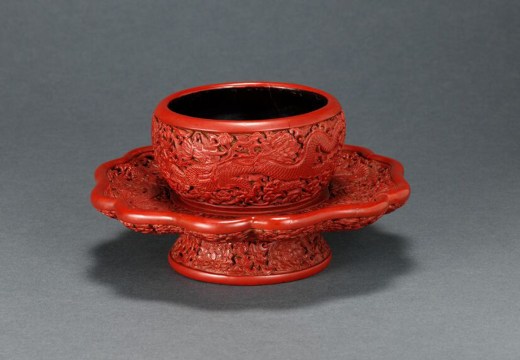On a cold night in Munich, the 26th of April, the luxury writing instruments, watches and accessories brand Montblanc launched the 27th edition of its cultural patronage awards. These are the creation of the Hamburg-based Montblanc Cultural Foundation, set up in 1992 to promote the arts worldwide. Chief among its initiatives is the Montblanc de la Culture Arts Patronage Award, offered annually to up to 17 patrons, and which has so far honoured more than 280 patrons in over 20 countries. The crowd was gathered in Munich this year because Montblanc had chosen to pay homage to Ludwig II, the eccentric King of Bavaria from 1864 to 1886, with a series of bejewelled, special edition collectors’ pens. The ‘Fairytale King’ had been singled out for his extravagant patronage of architects, artisans and castle-builders as well as the composer Richard Wagner.
As well as celebrating patrons, Montblanc acts as one. Since 2002, the Montblanc Art Collection has commissioned more than 210 new artworks from around 170 artists, including such figures as John Armleder, Monica Bonvicini, Thomas Demand, Sylvie Fleury, Liam Gillick, Gary Hume, Fang Lijun, Thomas Ruff and Cerith Wyn Evans. The boldest step the foundation has taken in recent years, however, was the appointment to joint chairmanship in 2016 of the curatorial team Till Fellrath and Sam Bardaouil.
This double act of an ex-economics professor (Fellrath) and former actor and performance artist (Bardaouil) operates under the banner of curatorial platform Art Reorientated. Their stated goal is to excavate hidden histories of art created outside the usual canons. Past projects have focused on art from Iran, Beirut, Turkey and Korea. Their exhibition ‘Art et Liberté: Rupture, War and Surrealism in Egypt (1938–1948)’, has been winning plaudits in its travels from the Pompidou to Tate Liverpool to its current stop at the Moderna Museet in Stockholm. Elsewhere, the John Berger-inspired exhibition ‘Ways of Seeing’, which was presented at the Arter art space in Istanbul and the Boghossian Foundation in Brussels, invited audiences to look again at works from a wide range of artists both acclaimed and anonymous, from different cultures and eras, to understand better the cultural and political bases of our interactions with art.
This year’s German Patronage Award, selected by an international jury chaired by Fellrath and Bardaouil, was a clear expression of these values. Jürgen Wesseler is a name known only to the cognoscenti. In 1967 Wesseler, an engineer who has spent his working career in the small north German town of Bremerhaven, established his Kabinett für aktuelle Kunst, a non-profit contemporary art exhibition space. After work, Wesseler would sit in his small exhibition space and write to the artists he wanted to see exhibited in his town: Gerhard Richter, Lawrence Weiner, Carl Andre and so on. And they would come. Word soon got around about the quality of his exhibition-making; a show at the Kabinett became a badge of honour. Till Fellrath says, ‘He is someone who did something out of pure conviction. The model he was developing doesn’t fit any description: it was not a kunsthalle, it was not a museum, it was just one small room. It is a tough nut to crack for artists. They are forced really to push themselves. And he did it almost entirely out of pure curiosity for ideas.’

Till Fellrath, Moritz Wesseler, Sam Bardaouil and Vincent Montalescot at the Montblanc de la Culture Arts Patronage Award at the Munich Residenz on 26 April, 2018. Photo: Gisela Schober/Getty Images for Montblanc
Wesseler was unable to receive his award owing to illness, but being able to honour individuals like him was one of many inducements for Fellrath and Bargaouil to work with Montblanc. Bargaouil says, ‘When they approached us, one of the things that we found very reciprocal between how we think and what the foundation does is that very early on they were looking at patrons. They recognised the importance of people who empower others and allow things to happen.’ Their ambition is that the prize should become, in Fellrath’s words, ‘a go-to place for people who want to learn about best practice or have ideas for supporting the arts and want to learn more’.
In turn, the pair have used the resources of Montblanc to provide financial support for exhibitions and the production of new work by artists from Manila to North America. ‘It is about being relevant and enabling things to happen where they need to happen,’ Bargaouil says. ‘It is not about legitimising all these others by bringing them to us, in Hamburg. It is about going out there and using the resources with which we have been entrusted to allow things to happen where they need to happen, because that is where they make sense and where they have an impact. It keeps us learning.’
Unlimited access from just $16 every 3 months
Subscribe to get unlimited and exclusive access to the top art stories, interviews and exhibition reviews.














![Masterpiece [Re]discovery 2022. Photo: Ben Fisher Photography, courtesy of Masterpiece London](http://www.apollo-magazine.com/wp-content/uploads/2022/07/MPL2022_4263.jpg)
It’s time for the government of London to return to its rightful home